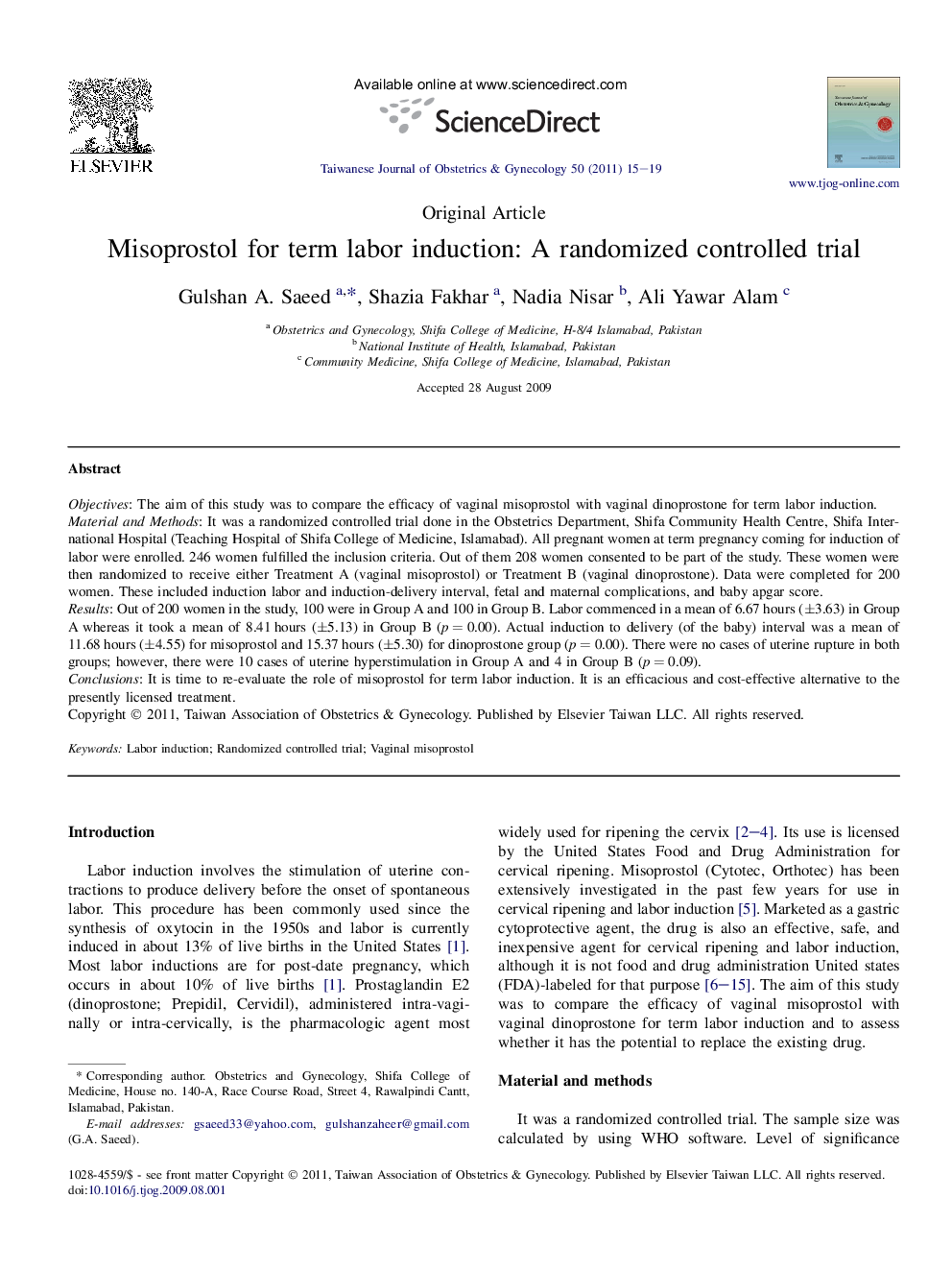| Article ID | Journal | Published Year | Pages | File Type |
|---|---|---|---|---|
| 3975719 | Taiwanese Journal of Obstetrics and Gynecology | 2011 | 5 Pages |
ObjectivesThe aim of this study was to compare the efficacy of vaginal misoprostol with vaginal dinoprostone for term labor induction.Material and MethodsIt was a randomized controlled trial done in the Obstetrics Department, Shifa Community Health Centre, Shifa International Hospital (Teaching Hospital of Shifa College of Medicine, Islamabad). All pregnant women at term pregnancy coming for induction of labor were enrolled. 246 women fulfilled the inclusion criteria. Out of them 208 women consented to be part of the study. These women were then randomized to receive either Treatment A (vaginal misoprostol) or Treatment B (vaginal dinoprostone). Data were completed for 200 women. These included induction labor and induction-delivery interval, fetal and maternal complications, and baby apgar score.ResultsOut of 200 women in the study, 100 were in Group A and 100 in Group B. Labor commenced in a mean of 6.67 hours (±3.63) in Group A whereas it took a mean of 8.41 hours (±5.13) in Group B (p = 0.00). Actual induction to delivery (of the baby) interval was a mean of 11.68 hours (±4.55) for misoprostol and 15.37 hours (±5.30) for dinoprostone group (p = 0.00). There were no cases of uterine rupture in both groups; however, there were 10 cases of uterine hyperstimulation in Group A and 4 in Group B (p = 0.09).ConclusionsIt is time to re-evaluate the role of misoprostol for term labor induction. It is an efficacious and cost-effective alternative to the presently licensed treatment.
